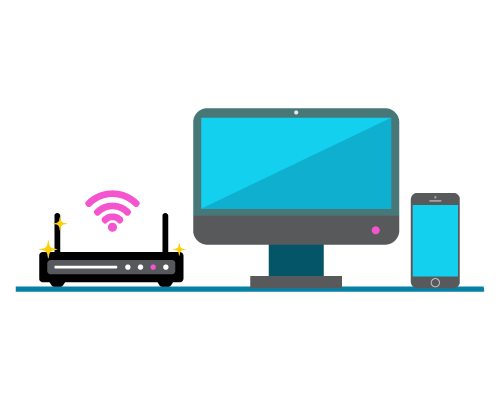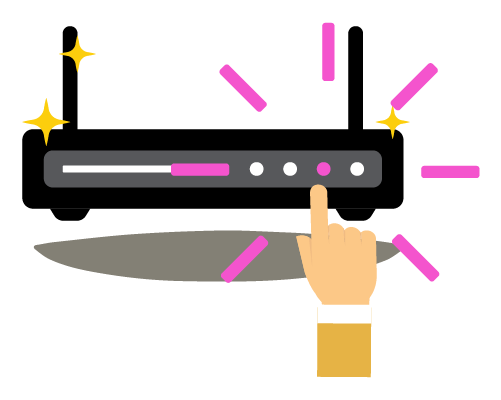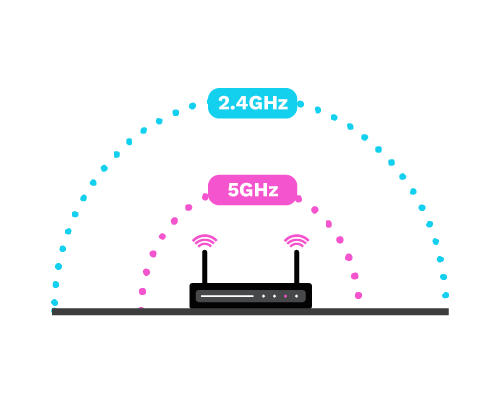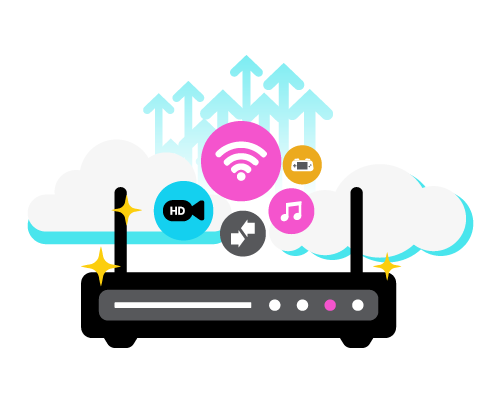Make your Internet work for you. Check out our tips and tricks to make the most out of your subscription.

WiFi is convenient and all but if you really want to maximise your Internet speeds, a wired connection is the way to go.
See the table below to see how a wired connection stacks up against WiFi.
Check out this table below so you can have a better idea in selecting the type of connection that befits your usage.
|
Point of Comparison |
Wired |
WiFi |
|---|---|---|
|
Speeds1 |
Faster You’re more likely to achieve subscribed broadband speeds via a direct Ethernet connection. |
Slower At least 2x slower than a wired connection. |
|
Latency2 |
Lower | Higher |
|
Mobility |
Less | More |
|
Convenience |
Less | More |
|
Stability |
Higher | Lower |
|
Security |
Higher It’s harder to intercept your data with a physically secured connection. |
Lower |
|
Ideal usage |
Great for large file transfers, smooth HD streaming and online gaming. Recommended connection for speed tests. | Flexible and convenient connectivity for multiple devices. |
Advanced devices on the market are likely to achieve at least 90% of your subscribed speeds over a wired connection. But if you don’t, check your Ethernet cable. It’s the one that connects your router to your computer or laptop. There are a few different categories that support different speeds. The type is usually indicated on the sides of the cable.
Cat-5: Speeds up to 100Mbps
Cat-5e: Speeds up to 1Gbps
Cat-6: Speeds up to 10Gbps
Cat-5: Speeds up to 100Mbps
Cat-5e: Speeds up to 1Gbps
Cat-6: Speeds up to 10Gbps
NOTE: Your Internet speed is only as fast as the speeds that you are subscribed to.
If you are having problems with your connection, talk to us via Live Chat.

Think of your WiFi as waves broadcasted slightly downwards and weakens by distance. Get the best WiFi performance by going through this checklist when positioning your router.
Place it in an open area
Place it in a central location or close to where you use your devices most
Place it on a slightly elevated location (eg: high table / open shelf)
Interference from electronic equipment
Heat source
Water source such as fish tanks



Most folks leave their routers running 24/7. If you do, this will eventually result in your router performance slowing down. Excessive usage causes your router to run out of memory and overheat, disrupting your connection.
Restart your router when needed to improve its performance.
Step 1: Switch it off and unplug from the socket.
Step 2: Wait for 10 seconds.
Step 3: Plug it back in and switch it on.

Your WiFi connection could slow down if there are too many users on your network. Reduce the number of users on your network at any one time or change your WiFi password once every 3 months to prevent squatters from freeloading off your WiFi network.



Your WiFi network can slow you down if you’re connected to a congested 2.4GHz frequency. Dual-band routers that we provide lets you choose between the 2.4GHz or 5GHz bands for the best WiFi experience.
The 5GHz band is like having an alternate route on a congested expressway if you live in a highly populated residential area. Use the 5GHz band when you are closer to your router as it has a shorter broadcast range.
Hook on to 2.4GHz band when you are further away from your router as it has a wider broadcast range.

Check if connected devices from various users are running high bandwidth consumption activities simultaneously as it will slow down your Internet significantly. These activities include but not limited to:
Streaming high quality videos
Syncing large files on Dropbox
Downloading of torrent files
Game and application updates



Whenever you upgrade your speeds, check if your router is compatible with those new speeds. If your existing router is incompatible, go to the Self Care shop to see what devices we have in store for you. You can even check on your dashboard to see if you’re eligible to redeem any free devices, upon contract renewal.

Maximum achievable speeds are often based on ideal conditions in a lab. But in the real world, numerous factors can affect WiFi speed such as physical obstructions and interference.
It could also be your devices. First things first, make sure your personal device is compatible with WiFi 6 to enjoy better speeds and performance.
Next, check and reduce the number of devices connected to your WiFi as it could be congesting your network.

Enjoy fast and stable WiFi from the living room to the bathroom, and even that awkward spot behind the couch! Check out our mesh WiFi packages from just RM19/month.
Redress your complaints at the Consumer Forum Malaysia CFM www.complaint.cfm.org.my
